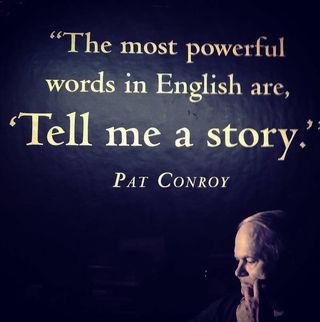Friends
The Importance of Storytelling in Creative Work
How you can use your story to attract and connect with your audience.
Posted November 9, 2017

Humans are storytelling animals.
From the beginnings of language (in whatever form), humans have used stories to educate and entertain: myth, poetry, song, art, gossip, even politics. They are all forms of storytelling. Nowadays, social media is a new way of telling stories. Ask anyone who is addicted to Facebook (like me): What is so interesting about it? Everyone on there is telling their story!
What does storytelling have to do with creativity?
Everything.
I help creative people run successful creative businesses. Whether they’re artists, writers, craftspeople, or something in between, my job is to help my clients tell their stories in a way that intrigues their community.
There is often a misconception among creative types that it’s “egotistical” or “narcissistic” to blatantly talk about themselves in relation to their work, and it can be true that too much self-focus can turn off one’s audience. But the doorway to attracting and engaging with the people in your community is to tell a story about how you got where you are. About why you do what you do. About specific projects and why they’re important to you.
In the end, most people want to share their own stories but it’s by sharing our stories that we allow others to share theirs. By sharing and being vulnerable, we also give our audience permission to share and to be vulnerable and to connect with us. And a connected, engaged audience is one who will want to work with you.
If you want to attract more clients and customers to your creative work, find a way to tell your story in a way that your people find compelling.
Here are some ideas:
- A short video (four minutes but not more) talking about why your art inspires you, or how you came to do that kind of work. Be sure to include a vulnerable moment or two. What struggles did you encounter?
- Discuss a piece that you are particularly fond of. Why is that piece important to you?
- Why is your approach different than others who do the same kind of work, and how did you come to this approach?
- What about the work you do keeps you doing it? Why do you love it so much?
These shares can be on video, social media, written on your blog or in an article, in a description of your work in a gallery or website but the key is to be succinct and open. A bored audience is not going to listen to your story.
To help figure out what details to share, write down points in your creative career that feel poignant:
- The moment you realized what kind of creative work you wanted to do.
- A moment when you had to choose to give up or keep going.
- Feedback—positive or negative—you got from the people around you that inspired you to take the next step.
- A person or experience that inspired you to go into creative work.
Ask trusted friends to listen to your story and tell you what points seem the most interesting to them.
When I hear someone talking about their story, there are almost always a few moments when my ears perk up, and plenty of moments when they don’t. We all inherently think our stories are fascinating, but not all details are. Ask friends for input. What details about your story make them want to hear more?
Next time: ways to create a compelling narrative.


